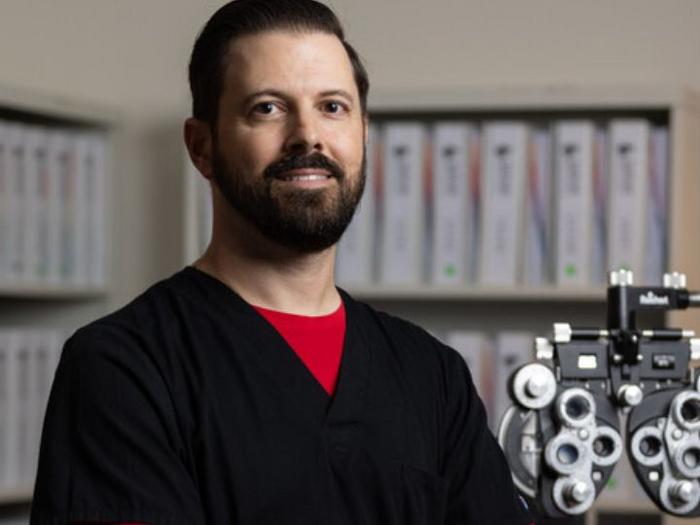
Advancements in the management of myopia in children have become a crucial focal point in optometric research, particularly as the prevalence of this condition continues to escalate globally. Myopia, or nearsightedness, has been documented as affecting approximately 35% of children worldwide, and alarming projections estimate that this figure could rise to 40% by the year 2050, representing over 740 million children. These startling statistics have provided the impetus for groundbreaking studies led by David Berntsen, a prominent figure in the field of optometry and the chair of Clinical Sciences at the University of Houston College of Optometry.
Berntsen’s dedication to addressing the increasing incidence of myopia has manifested in collaborative efforts with researchers at Ohio State University, aiming to explore effective interventions. The approach adopted by Berntsen and his research team is centered around the Bifocal Lenses In Nearsighted Kids (BLINK) Studies, which focus on utilizing high-add power multifocal contact lenses. These lens designs have been shown to significantly slow the progression of myopia in children, an effect that remarkably persists even after the lenses are discontinued.
In recent findings published in the esteemed journal “Investigative Ophthalmology and Visual Science,” Berntsen reported that the biological alterations associated with the use of multifocal lenses may hold insights into managing eye growth effectively. Central to his research is the understanding that myopia primarily develops as a result of excessive elongation of the eyeball, which disrupts proper focusing on the retina, resulting in blurred distances. Such an alteration in eye structure emphasizes the vital importance of early and effective intervention strategies.
.adsslot_0LvhNkwXT6{width:728px !important;height:90px !important;}
@media(max-width:1199px){ .adsslot_0LvhNkwXT6{width:468px !important;height:60px !important;}
}
@media(max-width:767px){ .adsslot_0LvhNkwXT6{width:320px !important;height:50px !important;}
}
ADVERTISEMENT
One significant physiological aspect that Berntsen and his team examined is the role of the choroid, a layer rich in blood vessels responsible for nourishing the retina. Their investigations revealed that children fitted with high-add multifocal lenses experienced a gradual thickening of the choroid, indicating a potential mechanism by which eye growth is regulated during lens use. This discovery positions the choroid as a key player in ocular biology, suggesting that its physiological responses could be integral to formulating strategies that mitigate myopia’s progression.
The data was collected from a robust sample of 281 myopic children, aged between 7 and 11 years, who were randomly assigned to wear either standard single vision contact lenses or the multifocal variants. Over the course of the three-year study, researchers carefully monitored changes in subfoveal choroidal thickness and area, noting significant differences between the two groups. The multifocal lens group exhibited enhanced choroidal stability, which correlated closely with reduced axial elongation, a primary growth factor in myopia development.
As results accumulated over the duration of the study, Berntsen and his co-researchers were able to draw clear connections between choroidal responses and overall eye growth trends. Notably, the high-add multifocal lens wearers demonstrated consistently thicker choroids compared to their single vision counterparts, who exhibited no similar growth responses. These findings suggest not only the effectiveness of multifocal lenses in myopia management but also highlight the potential for choroidal measurements as an indicator of treatment success in clinical settings.
Moreover, Berntsen emphasizes the importance of comprehensive longitudinal studies to establish a deeper understanding of the effects of these lenses on myopic children. The BLINK study stands out as one of the longest studies of its kind, offering valuable insights into ocular changes over time, particularly as myopia management strategies evolve. By continuously monitoring the physiological responses associated with different lens designs and their impacts on eye growth, researchers can refine these interventions to maximize their efficacy.
The implications of Berntsen’s research extend far beyond merely correcting vision among children. They signify a paradigm shift in the approach to myopia management, emphasizing the necessity of understanding underlying biological mechanisms to develop targeted strategies. With myopia prevalence expected to surge in the coming decades, the urgency for effective prevention strategies is increasingly critical. The knowledge gained from studies like the BLINK research can pave the way for new standards in optometric care that focus not just on immediate vision correction but on long-term ocular health.
In light of the profound impact of these findings, the academic community is encouraged to actively participate in further dialogue around the importance of integrating biological insights into optometric practices. Increased awareness about myopia and its long-term implications, particularly among children, supports the need for proactive intervention and can lead to an overall decrease in incidence rates.
As the prevalence of myopia continues to challenge global health initiatives, the research conducted by Berntsen and his team illustrates the pivotal role that innovative treatment modalities, such as multifocal contact lenses, can play in addressing this growing crisis. Their work not only contributes to the broader field of optometry but also serves as a call to action for practitioners, researchers, and families alike to prioritize eye health from a young age.
In conclusion, as we champion these findings, it is crucial to champion collaboration across disciplines, fostering an environment where groundbreaking discoveries can translate into everyday practices that prioritize eye health and well-being.
Subject of Research: Myopia in Children
Article Title: Three-Year Change in Subfoveal Choroidal Thickness and Area With Multifocal Contact Lens Wear in the Bifocal Lenses in Nearsighted Kids (BLINK) Study
News Publication Date: 1-May-2025
Web References: https://iovs.arvojournals.org/article.aspx?articleid=2802948
References: Available upon request from the University of Houston or the journal.
Image Credits: University of Houston
Keywords
Myopia, Multifocal Contact Lenses, Choroidal Thickness, Children’s Eye Health, Optometry, Vision Correction, BLINK Study, Ocular Biology, Axial Elongation, Longitudinal Study, Preventive Eye Care, Clinical Research.
Tags: advancements in optometric researchBLINK studies on myopiacollaborative research in optometrycombating myopia progressioneffects of high-add power lensesfuture of myopia interventionslong-term effects of contact lensesmultifocal contact lenses for myopiamyopia management strategies for childrennearsightedness prevalence in childrenrole of optometrists in myopia treatmentstrategies to reduce myopia in youth





